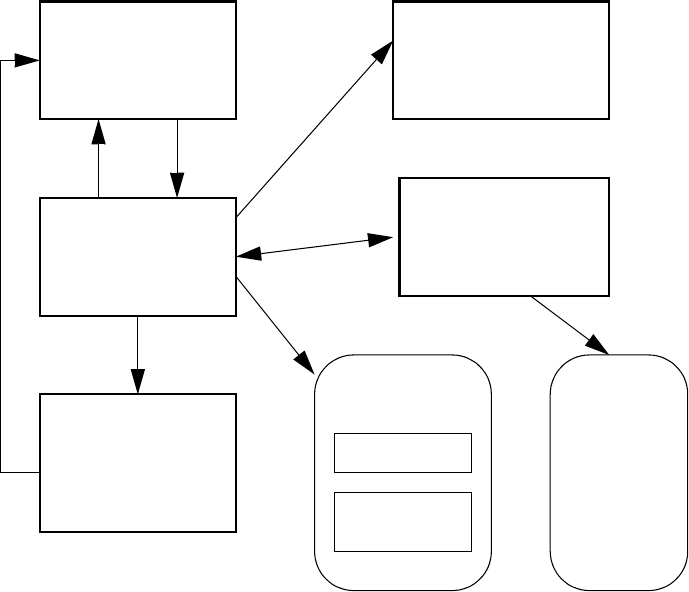LDAP-UX Client Services B.04.15 with Microsoft Windows Active Directory Server Administrator's Guide (edition 8)
Table Of Contents
- LDAP-UX Client Services B.04.15 with Microsoft Windows Active Directory Administrator's Guide
- Table of Contents
- Preface
- 1 Introduction
- 2 Installing LDAP-UX Client Services
- Before You Begin
- Summary of Installing and Configuring LDAP-UX Client Services
- Planning Your Installation
- Installing LDAP-UX Client Services on a Client
- Configuring Active Directory for HP-UX Integration
- Step 1: Install Active Directory
- Step 2: Install SFU 2.0, 3.0 or 3.5 including Server for NIS
- Step 3: Create a Proxy User
- Step 4: Add an HP-UX Client Machine Account to Active Directory
- Step 5: Use ktpass to Create the Keytab File for the HP-UX client machine
- Step 6: Add POSIX Attributes into the Global Catalog
- Importing Name Service Data into Your Directory
- Configuring LDAP-UX Client Services
- Step 1: Run the Setup Program
- Step 2: Install the PAM Kerberos Product
- Step 3: Configure Your HP-UX Machine to Authenticate Using PAM Kerberos
- Step 4: Configure the Name Service Switch (NSS)
- Step 5: Configure the PAM Authorization Service Module (pam_authz)
- Step 6: Configure the Disable Login Flag
- Step 7: Verify LDAP-UX Client Services for Single Domain
- Step 8: Configure Subsequent Client Systems
- Configuring the LDAP-UX Client Services with SSL or TLS Support
- Downloading the Profile Periodically
- 3 Active Directory Multiple Domains
- 4 LDAP-UX Client Services with AutoFS Support
- 5 LDAP Printer Configurator Support
- 6 Dynamic Group Support
- 7 Administering LDAP-UX Client Services
- Using the LDAP-UX Client Daemon
- Integrating with Trusted Mode
- SASL GSSAPI Support
- PAM_AUTHZ Login Authorization
- Policy And Access Rules
- How Login Authorization Works
- PAM_AUTHZ Supports Security Policy Enforcement
- Policy File
- Policy Validator
- Dynamic Variable Support
- Constructing an Access Rule in pam_authz.policy
- Static List Access Rule
- Dynamic Variable Access Rule
- Security Policy Enforcement with Secure Shell (SSH) or r-commands
- Adding Additional Domain Controllers
- Adding Users, Groups, and Hosts
- User and Group Management
- Displaying the Proxy User's Distinguished Name
- Verifying the Proxy User
- Creating a New Proxy User
- Displaying the Current Profile
- Creating a New Profile
- Modifying a Profile
- Changing Which Profile a Client is Using
- Creating an /etc/krb5.keytab File
- Considering Performance Impacts
- Client Daemon Performance
- Troubleshooting
- 8 Modifying User Information
- 9 Mozilla LDAP C SDK
- A Configuration Worksheet
- B LDAP-UX Client Services Object Classes
- C Command, Tool, Schema Extension Utility, and Migration Script Reference
- LDAP-UX Client Services Components
- Client Management Tools
- LDAP User and Group Management Tools
- Environment Variables
- Return Value Formats
- Common Return Codes
- The ldapuglist Tool
- The ldapugadd Tool
- The ldapugmod Tool
- The ldapugdel Tool
- The ldapcfinfo Tool
- LDAP Directory Tools
- Schema Extension Utility
- Name Service Migration Scripts
- Unsupported Contributed Tools and Scripts
- D Sample PAM Configuration File
- E Sample /etc/krb5.conf File
- F Sample /etc/pam.conf File for HP-UX 11i v1 Trusted Mode
- G Sample /etc/pam.conf File for HP-UX 11i v2 Trusted Mode
- H Sample PAM Configuration File for Security Policy Enforcement
- Glossary
- Index

Figure 7-2 PAM_AUTHZ Environment
pam enabled
application
pam_authz
authentication
modules,
for example:
pam_kerberos
ldap-ux
client daemon
ldapclientd
policy
configuration file
/etc/group
/etc/netgroup
1
2
3
4
6
5
1
7
LDAP
directory
server
pam_ldap
The following describes the policy validation processed by PAM_AUTHZ for the user login
authorization shown in figure 7–2:
PAM_AUTHZ Environment
1. The administrator defines a local policy file and saves all the defined access rules in the policy
configuration file, /etc/opt/ldapux/pam_authz.policy.
2. PAM_AUTHZ service module receives an authorization request from PAM framework. It
processes all the access rules stored in the /etc/opt/ldapux/pam_authz.policy file.
3. If a rule indicates that the required information is stored in a LDAP server, PAM_AUTHZ
constructs a request message and sends to the LDAP client daemon, ldapclientd. The LDAP
client daemon performs the actual ldap query and returns the result to PAM_AUTHZ. Then the
access rule is evaluated and the final access right is returned.
4. If a rule indicates that the required information is in the UNIX files. PAM_AUTHZ retrieves
user's information from /etc/passwd, /etc/group or /etc/netgroup file through
getpwname() or getgrname() system calls. Then the rule is evaluated and the final access
right is returned.
5. PAM_AUTHZ returns the corresponding pam result to PAM framework. The decision is
returned to the application which called the PAM API.
6. If the user has the permission to login. then the decision is returned to the next PAM service
module that is configured in pam.conf file, such as pam_ldap or pam_kerberos. If the user has
no access right, then login is denied.
7. The PAM service module returns the authentication result to the application which called the
PAM API.
PAM_AUTHZ Login Authorization 107










